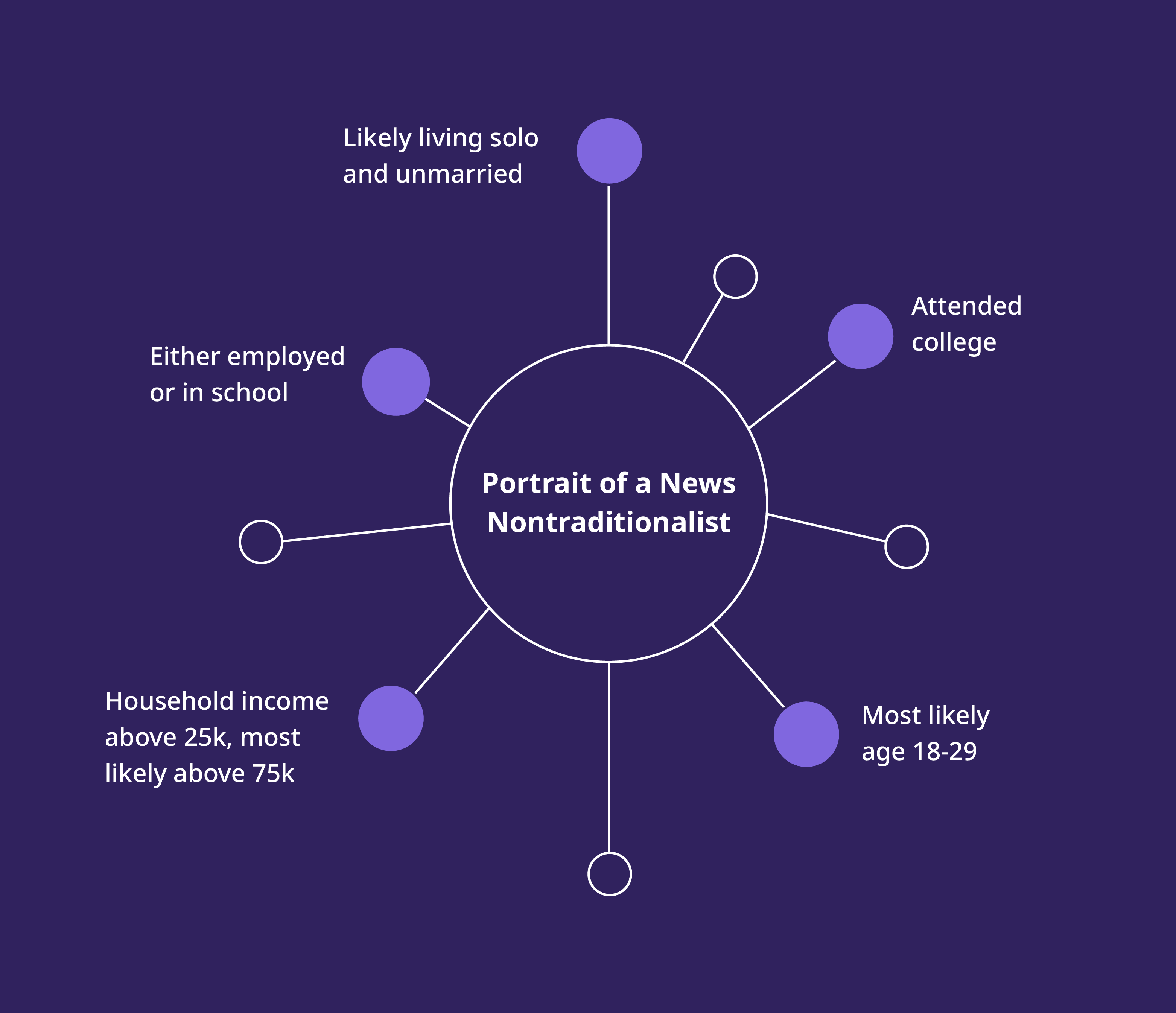What the Rise of Independent News Outlets Means for Earned Media Strategy

Posted By Kathy Wilson on November 06, 2025
Public relations has always been about one thing: helping brands, people, and organizations get noticed in the right places, with the right messages. For decades, that meant securing a story in a top national newspaper, a segment on broadcast TV, or a feature in a trade magazine. But today, the media world looks very different. Audiences are scattered across podcasts, newsletters, blogs, social platforms, and independent outlets. The question for brands is no longer how to get coverage, but where to get it.
This shift has made earned media more valuable than ever. According to the PR Council, 89% of links cited by AI come from earned media, highlighting its critical role in building trust and authority. Yet as traditional newsrooms shrink and audiences fragment, it can feel impossible to know exactly where your audience is consuming news.
To answer that, Tier One surveyed 2,000 U.S. news readers and watchers. The survey revealed where consumers are actually turning for news, giving brands actionable insights on how to connect with them in today’s fragmented media landscape.
The Rise of Independent Media
This isn’t a sudden shift — it’s been years in the making. Traditional newsrooms are downsizing due to budget cuts and many publications are shuttering altogether, leaving a gap for smaller, independent outlets to fill. More journalists are moving to independent media, like blogs, podcasts, newsletters, and niche publications, to report the news and engage audiences in ways mainstream media sometimes can’t.
Our survey found 80% of respondents believe independent media is essential for a healthier information ecosystem. And the growth numbers are staggering. For example, Substack, a leading independent publishing platform, grew from 3 million paid subscribers in 2024 to 5 million in 2025, showing that audiences are hungry for alternatives to traditional news.
Who's Consuming Independent Media — And Why Brands Should Care
Not everyone is tuning into indie outlets, but those who are tend to be highly engaged and influential. Our survey discovered the core demographic:

Among this group, 82% say independent media is their #1 source for news today, while 87% trust it for in-depth and investigative reporting. These are the audiences brands want to reach; they’re active news consumers and often serve as trendsetters and opinion leaders within their communities.
How to Pitch to Independent Media Outlets (and Win Coverage)
Reaching these increasingly coveted indie outlet audiences requires a slightly different approach than when pitching to the mainstream media. Success starts with understanding how your brand relates not only to these audiences, but to the journalists behind the independent outlets.
Identify Your Niche
Independent outlets succeed by serving highly specific audiences. For brands, the first step is figuring out which blogs, newsletters, podcasts, or other platforms align with your topic or campaign. Understanding the outlet’s tone and content ensures your pitch speaks directly to the people they’re trying to reach.
Brand takeaways:
- Create a list of outlets that cover your industry or topics related to your product or initiative.
- Study their content for tone, style, audience, and story formats.
- Note which outlets have active engagement (comments, shares, or social followings) to gauge audience responsiveness.
Tailor Your Content
A generic press release won’t cut it. Your pitch should reflect the outlet’s mission and focus, and frame your story in a way that resonates with their audience. Tailoring your content shows you understand both the outlet and the community it serves, making your story more likely to be picked up.
Brand takeaways:
- Reference previous stories the independent organization has published and explain how your content complements or extends those narratives.
- Frame your story to align with its audience’s values and interests.
- Avoid overly promotional language (indie outlets prioritize informative, engaging content over marketing messages).
Demonstrate Audience Connection
Independent journalists care deeply about relevance. Show how your story adds value to their readers, listeners, or viewers, and your pitch instantly becomes more compelling.
Brand takeaways:
- Explain how your story solves a problem, answers a question, or entertains the outlet’s audience.
- Include data points, examples, or case studies that illustrate audience interest.
- Highlight any shared values between your brand and the outlet, such as social impact or innovation.
Be Flexible With Formats
Independent media often operate across multiple platforms — podcasts, blogs, newsletters, social channels, video. Brands that can adapt to the outlet’s preferred format increase the chances of coverage. Flexibility not only makes it easier for journalists to work with you, but also demonstrates respect for the way they engage their audience.
Brand takeaways:
- Ask what format works best before sending a full pitch.
- Offer multiple options: written article, Q&A, infographic, or recorded segment.
- Provide assets (images, videos, quotes) that are easy for them to incorporate.
Build Relationships, Not Just Press Hits
Indie journalists value ongoing collaboration more than one-off coverage. Investing in relationships can lead to repeat opportunities, better story angles, and trusted credibility. Over time, your brand becomes a go-to source rather than just another contact in their inbox.
Brand takeaways:
- Follow and engage with the outlet on social media. Share and comment thoughtfully.
- Keep a record of previous interactions and coverage to personalize future pitches.
- Offer exclusives or early access to new stories, products, or data to strengthen the partnership.
Meeting Audiences Where They Are: The Future of Earned Media
The rise of independent media exemplifies a shift in how people consume information. By approaching indie media thoughtfully, brands can build credibility, trust, and long-term engagement with highly influential audiences.
Our Media Innovation Survey, conducted with 2,000 U.S. news readers and watchers, provides a clear window into shifting audience habits — and what brands need to do to meet them where they are. Download the full “Tier One Media Pulse: How Americans Really Consume News” report today.

Kathy Wilson
Kathy Wilson is a Co-founder and Managing Partner at Tier One, where she leads the agency's Boston office and serves as a strategic client counselor. She taps her three decades of experience in B2B and B2C technology, digital healthcare, and financial services — including work counseling major brands like SAP, Citrix, Ultimate Software, GHX, and Ally Financial — to help clients meet critical business and marketing objectives. Kathy is a die-hard Red Sox fan and loves nothing better than a summer day at Fenway Park.


